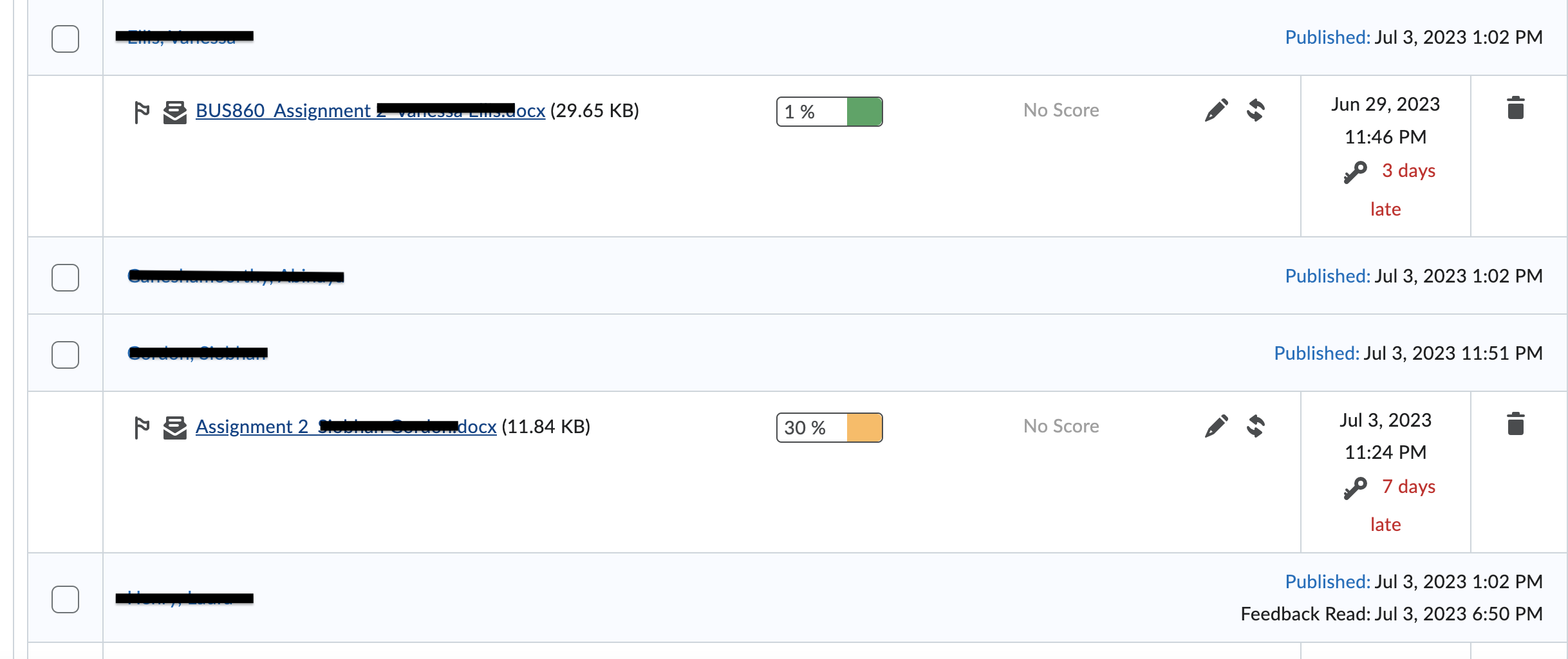8 Late Policy and Late Submission Counting
Late Submission Policy
Grading Late Submissions and Applying Penalties
Avenue to Learn doesn’t automatically apply penalties for late submissions. If you submit an assignment past the due date, your instructor will be responsible for manually determining and implementing the late penalty which will adjust your assignment grade.
Here is how the late penalty is applied:
- Initially, your instructor will grade your submission without considering its lateness, based on the established rubric or grading criteria. For example, you may receive a score like 15/20.
- This initial grade will be documented in the feedback section so you understand what your mark would have been before the late penalty was taken into account.
- The next step is to convert this original grade into a percentage. For instance, 15/20 would be 75%.
- The late penalty is then subtracted from this percentage. So, if your late penalty is 4%, your grade would drop from 75% to 71%. This final percentage is then translated back into a score out of the total possible points. Using our example, 71% of 20 is 14.2.
- Your instructor will record the late penalty calculation in the feedback section and input the final grade (after the late penalty has been deducted) into the grade book.
It’s important to note that although the grade book is set to round grades to the closest whole number for viewing, the exact grade (like 14.2/20) is used when tallying your final grade.
Understanding Late Submission Counting in Avenue to Learn
Avenue to Learn employs a specific methodology for calculating late submissions. It’s essential for both instructors and students to understand this process to ensure consistency and clarity when applying late penalties.
Here’s how it works:
- Assignments with a specified due time (e.g., at 11:59 pm) are marked as late if submitted even a minute past the deadline.
- The system starts the ‘late’ count from this deadline, beginning at the next minute (i.e., 12:00 am of the following day).
For example, an assignment due at noon on a Friday (12:00 pm) that is submitted just before noon (at 11:58 am) on the following Monday would incur a 4%-mark deduction for being late by two full days (or 71 hours).
Refer to the examples in the screenshot below:
- An assignment due on June 25th at 11:59 pm and submitted on June 29th at 11:46 pm is marked as ‘3 days late.’
- If submitted on July 2nd at 11:24 pm, the same assignment is marked as ‘7 days late.’

Key points to remember:
- Avenue to Learn counts days as full 24-hour periods from the deadline.
- Assignments submitted even a minute past the due time are marked as ‘< 1hr late’, becoming ‘1 day late’ only at 11:59 pm.
- The system does not consider calendar days, which can lead to discrepancies if users count entire days from the due date without considering the specific due time.
- No part-day calculations are made. A fixed penalty of 2% is applied to any work submitted within the first 24 hours past the deadline, and this continues for each subsequent 24-hour period, up to a maximum of 7 days.
- The policy applies to all days, including weekends, holidays, and University closure days.
By referencing Avenue to Learns’ submission date and time log and utilizing its late markers, we can ensure fair and accurate implementation of the late policy.

